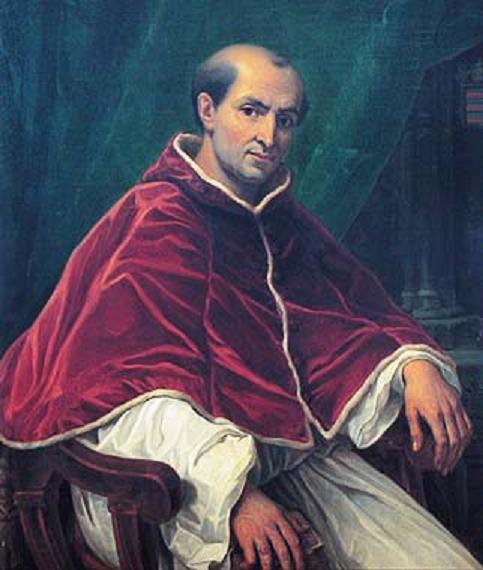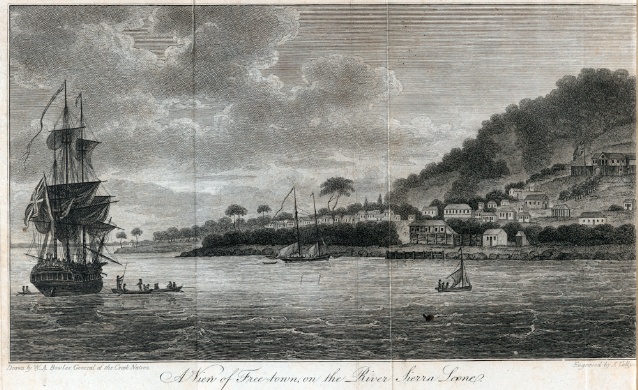|
Rothley Temple
Rothley Temple, or more correctly Rothley Preceptory, (pronounced ''Rowth-Ley'') was a preceptory (a religious establishment operated by certain orders of monastic knights) in the village of Rothley, Leicestershire, England, associated with both the Knights Templar and the Knights Hospitaller. The preceptory's chapel, constructed by the Knights Templar, is currently part of the Rothley Court Hotel. History Foundation Rothley Preceptory was established around the year 1231; however, records show "The Poor Fellow-Soldiers of Christ and of the Temple of Solomon" (more commonly known as the Knights Templar) owned land at Rothley as early as the reign of King John (1199–1216). On the establishment of the preceptory King Henry III granted the Knights Templar the manor and church at Rothley. The preceptory would come to own land in 13 neighbouring villages, including granges used for farming at Baggrave (near Hungarton) and Gaddesby. The knights of the preceptory also owned the Man ... [...More Info...] [...Related Items...] OR: [Wikipedia] [Google] [Baidu] |
Knights Templar
, colors = White mantle with a red cross , colors_label = Attire , march = , mascot = Two knights riding a single horse , equipment = , equipment_label = , battles = The Crusades, including: , anniversaries = , decorations = , battle_honours = , commander1 = Hugues de Payens , commander1_label = First Grand Master , commander2 = Jacques de Molay , commander2_label = Last Grand Master , commander3 = , commander3_label = , notable_commanders = The Poor Fellow-Soldiers of Christ and of the Temple of Solomon ( la, Pauperes commilitones Christi Templique Salomonici), also known as the Order of Solomon's Temple, the Knights Templar, or simply the Templars, was ... [...More Info...] [...Related Items...] OR: [Wikipedia] [Google] [Baidu] |
Pope Clement V
Pope Clement V ( la, Clemens Quintus; c. 1264 – 20 April 1314), born Raymond Bertrand de Got (also occasionally spelled ''de Guoth'' and ''de Goth''), was head of the Catholic Church and ruler of the Papal States from 5 June 1305 to his death in April 1314. He is remembered for suppressing the order of the Knights Templar and allowing the execution of many of its members. Pope Clement V was the pope who moved the Papacy from Rome to Avignon, ushering in the period known as the Avignon Papacy. Early career Raymond Bertrand was born in Vilandraut, Aquitaine, the son of Bérard, Lord of Villandraut. Bertrand studied the arts at Toulouse and canon and civil law at Orléans and Bologna. He became canon and sacristan of the Cathedral of Saint-André in Bordeaux, then vicar-general to his brother Bérard de Got, the Archbishop of Lyon, who in 1294 was created Cardinal-Bishop of Albano and papal legate to France. He was then made Bishop of St-Bertrand-de-Comminges, the cathedral ... [...More Info...] [...Related Items...] OR: [Wikipedia] [Google] [Baidu] |
William Wilberforce
William Wilberforce (24 August 175929 July 1833) was a British politician, philanthropist and leader of the movement to abolish the slave trade. A native of Kingston upon Hull, Yorkshire, he began his political career in 1780, eventually becoming an independent Member of Parliament (MP) for Yorkshire (1784–1812). In 1785, he became an evangelical Christian, which resulted in major changes to his lifestyle and a lifelong concern for reform. In 1787, Wilberforce came into contact with Thomas Clarkson and a group of activists against the slave trade, including Granville Sharp, Hannah More and Charles Middleton. They persuaded Wilberforce to take on the cause of abolition, and he soon became the leading English abolitionist. He headed the parliamentary campaign against the British Slave Trade for 20 years until the passage of the Slave Trade Act of 1807. Wilberforce was convinced of the importance of religion, morality and education. He championed causes and campaigns such as t ... [...More Info...] [...Related Items...] OR: [Wikipedia] [Google] [Baidu] |
Clapham Sect
The Clapham Sect, or Clapham Saints, were a group of social reformers associated with Clapham in the period from the 1780s to the 1840s. Despite the label "sect", most members remained in the established (and dominant) Church of England, which was highly interwoven with offices of state. However, its successors were in many cases outside of the established Anglican Church. History The Clapham movement grew from 18th-century evangelical trends in the Church of England (the Anglican Church) and started to coalesce around residents of Clapham, especially during the rectorship there of John Venn (in office: 1792-1813) and came to engage in systematically advocating social reform. In the course of time the growth of evangelical Christian revivalism in England and the movement for Catholic emancipation fed into a waning of the old precept that every Englishman automatically counted as an Anglican. Some new Christian groups (such as the Methodists and the Plymouth Brethren) mo ... [...More Info...] [...Related Items...] OR: [Wikipedia] [Google] [Baidu] |
Thomas Babington
Thomas Babington of Rothley Temple (; 18 December 1758 – 21 November 1837) was an English philanthropist and politician. He was a member of the Clapham Sect, alongside more famous abolitionists such as William Wilberforce and Hannah More. An active anti-slavery campaigner, he had reservations about the participation of women associations in the movement. Early life and education He was the eldest son of Thomas Babington of Rothley Temple, Leicestershire, from whom he inherited Rothley and other land in Leicestershire in 1776. He was part of the Babington family. He was educated at Rugby School and St John's College, Cambridge where he met William Wilberforce and other prominent anti-slavery agitators. Anti-slavery and philanthropy Babington was an evangelical Christian of independent means who devoted himself to a number of good causes. His home at Rothley Temple was regularly used by Wilberforce and associates for abolitionist meetings, and it was where the bill to abolish ... [...More Info...] [...Related Items...] OR: [Wikipedia] [Google] [Baidu] |
Babington Family
Babington is the name of an Anglo-IrishBurke's Landed Gentry of Ireland, 1958, 4th Edition by L. G. Pine, Burke's Peerage: 'Babington of Creevagh', pg 42' and English gentry family. The Anglo-Irish branch of the family is still extant today. Babington family of England Sir John de Babington, Lord of Babington, was recorded in the county of Northumberland in 1178. Sir John de Babington (1304-1353), a great-great-grandson of the first recorded Sir John, was Chief Captain of Morlaix in Brittany during the reign of King Edward III, and was buried in monastery of the White Friars at Morlaix. His son, Sir John de Babington (1335-1409) is said to have exclaimed in Norman French: 'foy est tout' ("faith is all"), on being chosen by King Henry IV for dangerous duty in France, which became the family's motto. His son, Thomas Babington of Dethick (c.1376-1464) served with King Henry V at the Battle of Agincourt. Thomas's son Sir John Babington of Dethick (1423-1485), was slain at the Ba ... [...More Info...] [...Related Items...] OR: [Wikipedia] [Google] [Baidu] |
Preceptor
A preceptor (from Latin, "''praecepto''") is a teacher responsible for upholding a ''precept'', meaning a certain law or tradition. Buddhist monastic orders Senior Buddhist monks can become the preceptors for newly ordained monks. In the Buddhist monastic code of discipline, the Buddha instructed that one of the criteria to conduct the "Higher Ordination" Ceremony (Upasampadā) is that the candidate will need to have a preceptor to provide guidance on monastic discipline, consisting of 227 precepts. During the ordination, the candidate will request one of the senior monks to be his preceptor. When the senior monk agreed to do so, he will be the preceptor of the candidate and guide him as long as he remains a bhikkhu in the Buddha's Dispensation (Buddha Sāsana). Christian military orders A preceptor was historically in charge of a preceptory, the headquarters of an order of monastic knights, such as the Knights Hospitaller or the Knights Templar, within a given geographical ar ... [...More Info...] [...Related Items...] OR: [Wikipedia] [Google] [Baidu] |
Dalby And Heather Preceptory
Dalby Preceptory, also known as Dalby and Heather Preceptory, was a preceptory of the Knights Hospitaller, in the village of Old Dalby, Leicestershire, England. History Land at Dalby was given to the Knights Hospitaller by Robert de Beaumont, 2nd Earl of Leicester (1104 – 5 April 1168) in return for other land.'House of Knights Hospitallers: Preceptory of Dalby and Heather' A History of the County of Leicestershire: Volume 2 (1954), pp. 32-33. Date accessed: 16 June 2013 The Hospitallers are thought to have founded their preceptory on that land during the reign of King Henry II ''(reign 1154-1189)''; and it was definitely established before 1206. Before 1199 the Hospitallers ... [...More Info...] [...Related Items...] OR: [Wikipedia] [Google] [Baidu] |
Edward II Of England
Edward II (25 April 1284 – 21 September 1327), also called Edward of Caernarfon, was King of England and Lord of Ireland from 1307 until he was deposed in January 1327. The fourth son of Edward I, Edward became the heir apparent to the throne following the death of his elder brother Alphonso. Beginning in 1300, Edward accompanied his father on invasions of Scotland. In 1306, he was knighted in a grand ceremony at Westminster Abbey. Following his father's death, Edward succeeded to the throne in 1307. He married Isabella, the daughter of the powerful King Philip IV of France, in 1308, as part of a long-running effort to resolve tensions between the English and French crowns. Edward had a close and controversial relationship with Piers Gaveston, who had joined his household in 1300. The precise nature of their relationship is uncertain; they may have been friends, lovers, or sworn brothers. Edward's relationship with Gaveston inspired Christopher Marlowe's 15 ... [...More Info...] [...Related Items...] OR: [Wikipedia] [Google] [Baidu] |
Heresy
Heresy is any belief or theory that is strongly at variance with established beliefs or customs, in particular the accepted beliefs of a church or religious organization. The term is usually used in reference to violations of important religious Religion is usually defined as a social- cultural system of designated behaviors and practices, morals, beliefs, worldviews, texts, sanctified places, prophecies, ethics, or organizations, that generally relates humanity to supernatur ... teachings, but is also used of views strongly opposed to any generally accepted ideas. A heretic is a proponent of heresy. The term is used particularly in reference to Heresy in Christianity, Christianity, Heresy in Judaism, Judaism, and Bid‘ah, Islam. In certain historical Christian, Muslim, and Jewish cultures, among others, espousing ideas deemed heretical has been (and in some cases still is) met with censure ranging from excommunication to the death penalty. Heresy is distinct ... [...More Info...] [...Related Items...] OR: [Wikipedia] [Google] [Baidu] |

._(FindID_65882).jpg)


.jpg)

